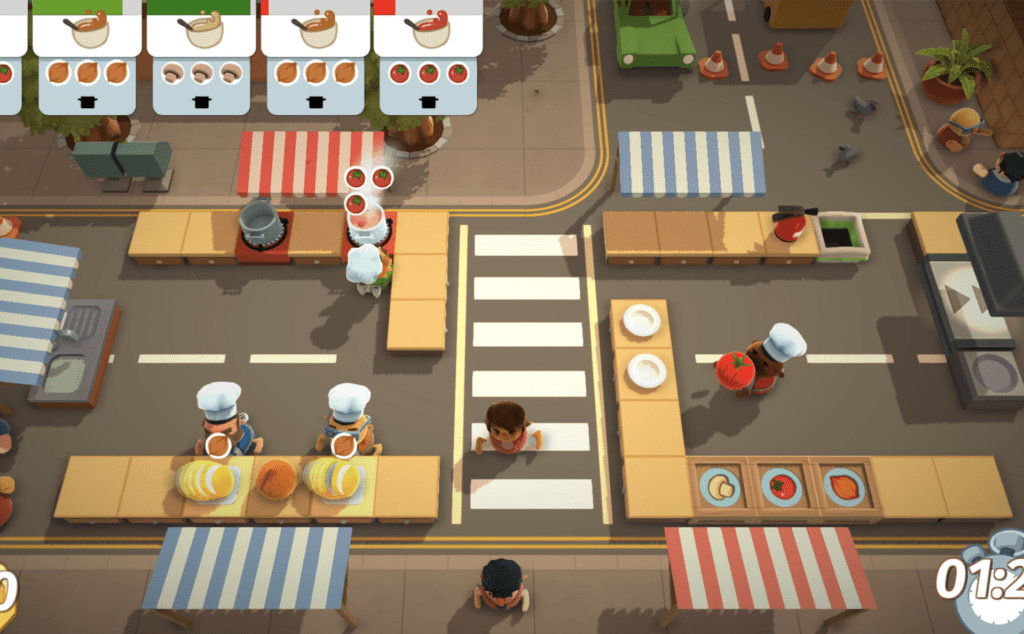INTRODUCTION
Overcooked is a game on Nintendo Switch that I really enjoy playing with friends and family. In Overcooked, players assume the roles of cartoon-ish cooks and collaborate to complete the most orders in a given amount of time. Your team’s score for a level will earn you a number of stars (maximum of 3 per round), which you can use to unlock new levels.

MECHANICS
For all levels of Overcooked, a core mechanic is the time limit. There is a timer that counts down in the lower right corner of the screen. The music and ticking of the timer also comically speeds up in the last 30 seconds of the level. In addition, you are awarded bonus points for serving orders quickly and receive penalties for missing orders. Finally, each order has multiple ingredients, all of which may need to be prepared in various ways before they can be served (e.g. Burger = bun + patty + lettuce + tomato + cheese, bun must be grilled, lettuce / tomato / cheese must be chopped).
DYNAMICS
The time and efficiency constraints encourage players to formulate strategies such as splitting up work. For example, one player might transport raw ingredients, one player cuts everything, one player assembles, and the last player delivers the orders and washes the plates. Another thing we end up doing is calling out requests for favors (e.g. “I need more lettuce!”) and providing status reports (e.g. “The burger is done, serve it now!”).
AESTHETICS
While challenge and fantasy are both aesthetics present in the game, I would say that the most essential and attractive aesthetic of Overcooked is fellowship. The enthusiastic cacophony of chaos, banter, and teamwork between the players, caused by the scrambling to complete orders, is the best part of the gaming experience.



